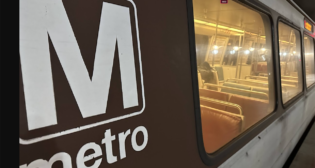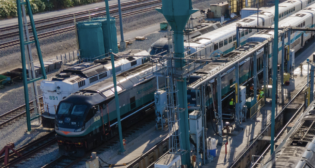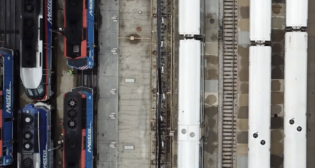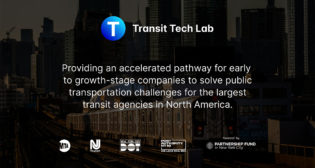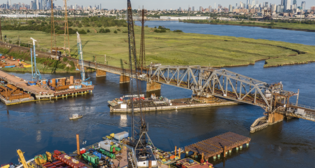
Toronto bickers—and builds
Written by William C. Vantuono, Editor-in-ChiefAs Daffy Duck might plead: Who’s in charge here?
Observers outside the Greater Toronto Area (GTA) can be forgiven for viewing the cartoonish rail disputes fracturing Canada’s largest city, a city that once was viewed as a North American model for rail transit’s future. Humorist Russell Baker joked Toronto was “New York run by the Swiss.” Laments one Canadian rail transit expert, “Not anymore; New York looks stellar by comparison today.”
Among other divides, discord at times is pitting urban Toronto against nearby neighbors (clamoring for more rail, including local transit). It includes GTA’s regional transit planning agency, Metrolinx, clashing with the venerable Toronto Transit Commission, and/or the TTC disagreeing with Toronto Mayor Rob Ford, who favors tunnels for both rapid transit and LRT (and who has played the “war against cars” card with flamboyance). Mayor Ford also has found himself at odds with Ontario provincial and Canadian federal government officials over capital funding.
There is good news. Suppliers—so far—have largely escaped any negative impact, because Toronto is proceeding with rail capital construction, on a large and fairly wide scale. Passenger equipment is on order from Sumitomo for 12 two-car diesel multiple-unit (DMU) trains (and a six-car option) for a new airport rail link, uniting Lester B. Pearson International Airport with Toronto’s Union Station downtown. Bombardier Transportation continues manufacturing two variants of LRT equipment for Toronto’s wildly fluctuating and fluid plans to upgrade and expand its light rail/streetcar network. Bombardier also continues delivering 420 Toronto Rocket subway cars, with delivery expected to be completed by 2013.
But the suppliers, too, are keeping a wary eye on the political scene. “It’s worrisome,” one supplier representative, speaking only for himself, confided privately to Railway Age.
Surface or subway? Rail or bus?
As 2012 began, “Some serious opposition to Mayor Ford has developed” concerning city rail transit, says Greg Gormick, a Toronto resident and rail advocate. Among those objecting: Toronto’s retired chief planner, Paul Bedford, now a Metrolinx board member, “who is a big proponent of LRT and the derailed Transit City plan” rejected by Mayor Ford when elected to office in March 2010, Gormick says.
Ford has stated a clear preference for the majority of passenger rail projects, heavy rail and light rail, be placed underground, eliminating any conflict with auto traffic which, he claims, approximates a “war on cars.” As a result, TTC’s 15-year, C$6 billion transit plan, including seven new LRT routes as part of “Toronto Transit City,” have been largely upended. Ford has promoted a subway light rail operation along Sheppard and Eglinton avenues east of the city center, elimination of LRT on Finch Street (using buses and/or BRT instead). “And Metrolinx goes, ‘Aye, aye, sir,’” Toronto Star columnist Royson James noted with disapproval last month.
But others have had an apparent change of heart. Though city councillors from Scarborough initially supported the mayor’s preference for underground rail (and his election), many of those councillors now are reconsidering surface running for Eglinton LRT, and even a return to the original Toronto Transit City design, citing potential savings of C$1.5 billion to C$2 billion by avoiding underground construction. TTC Chair Karen Stintz, who supports the change, has even noted the savings could be applied building a small portion of the Sheppard subway from Don Mills Road to Victoria Park Avenue—one of Ford’s pet projects.
So far, Ford is unmoved. “Scarborough residents voted me in to build subways and I’m building subways,” he said to local media. “I’ll do exactly what the provincial government wants to do. Last time I checked they’re going to build subways.”
Related to this is the conversion of TTC’s Scarborough Line from its Skytrain-type operation to more conventional light rail transit—a conversion already delayed and one that may involvd no rail service for four years, beginning in 2015. At a recent city budget committee hearing, TTC Chief General Manager Gary Webster said Mayor Ford’s election initially put the project in doubt, thus delaying its start. The conversion now will be coordinated with related extension of the Eglinton LRT line, now largely underground.
Said Bruce McCuaig, president and CEO of Metrolinx, “We’re looking to the city and council to land on a single position. No matter what that decision is, we’ve worked with them in the past, and will continue to work with them.”
Toronto satellite cities grumble
For GO Transit regional rail, some progress is evident. Greater Toronto likely will add its name to the list of North American cities linking its rail system to an airport; the roughly 2-mile extension of GO Transit’s Georgetown line is scheduled to debut in 2015, operating Sumitomo DMUs, in time for the Pan Am Games.
Critics argued that the route should have been electrified from the start, but Metrolinx says that upgrade can occur in future years.
GO Transit, GTA’s regional rail service, also has added service to several lines in recent years, and even extending its Lakeshore West rail service line to Niagara Falls, Ontario, just short of the U.S. border, during the summer.
But residents of one city on the Lakeshore West Line, Hamilton, say that’s not enough, and question whether Metrolinx and other decision makers are slighting their requests for rail transit, and/or foisting Bus Rapid Transit (BRT) options instead. “The province promised us light rail transit and they promised to pay for building it,” says the Hamilton Light Rail Initiative, a citizen’s group. Despite that, Ontario Premier Dalton McGuinty recently told a local newspaper that more GO train service “was the No. 1 ask of the city. We’ve had some important conversations with the mayor, and this is their priority, which made it our priority. Over time, we can enter into other discussions about things like the LRT.”
Northwest of Hamilton, along GO Transit’s Kitchener Line, the Region of Waterloo, including Kitchener, Waterloo, and Cambridge, have fought amongst themselves, and with others, on who gets light rail transit and who gets relegated (“or stuck,” one Toronto rail advocate says) with BRT. Last June the Regional council voted to approve funding for phase 1, consisting of light rail for Kitchener and Waterloo, with BRT for Cambridge, with a goal of extending light rail to Cambridge in the future. Phase 1 is scheduled to begin construction in 2014 and open in 2017.
Back at Toronto Union Station, GO Transit continues work on a C$280 million signal upgrade, part of its “Union StationRail Corridor Program,” overseen by Siemens Transportation, scheduled for completion in 2014. That upgrade will benefit GO Transit riders from Toronto’s suburbs, but it may not be enough to quiet an increasingly restive region when it comes to rail transit.
Fare hikes and budget cuts
Amidst all this, the TTC late last year approved fare hikes of 10 cents for the next four years, the first effective Jan. 1, that included restoration of full bus service on some busier routes, and also approved a plan offered by TTC Chair Stintz to use C$5 million in anticipated diesel fuel savings to continue paratransit (“Wheel-trans”) services.
Last month, Mayor Ford unveiled a 2012 city budget that cuts C$1.1 billion from planned TTC projects over the coming nine years, including purchases of subway cars, streetcars, and platform edge barriers at subway stations.
Both fiscal moves put more pressure on TTC, the third-busiest transit system in North America behind New York and Mexico City. About half its 2.5 million daily riders use the bus, while about 948,000 tap rapid transit and another 285,600 ride TTC’s streetcar system.
TTC Chief General Manager Gary Webster acknowledged this is a “permanent shrinkage in the quality of transit service inToronto.” That’s an ominous note at a time when other North American cities seek to grow rail transit.
